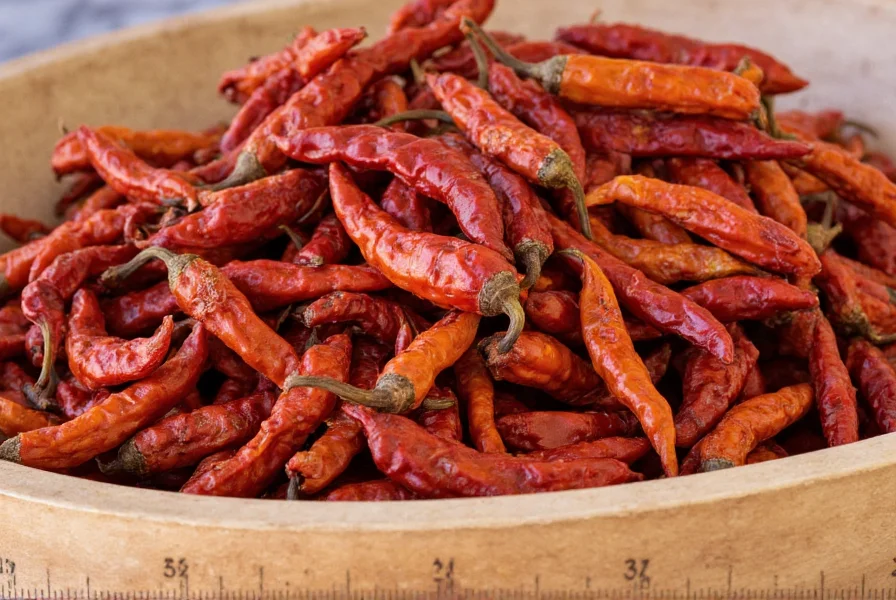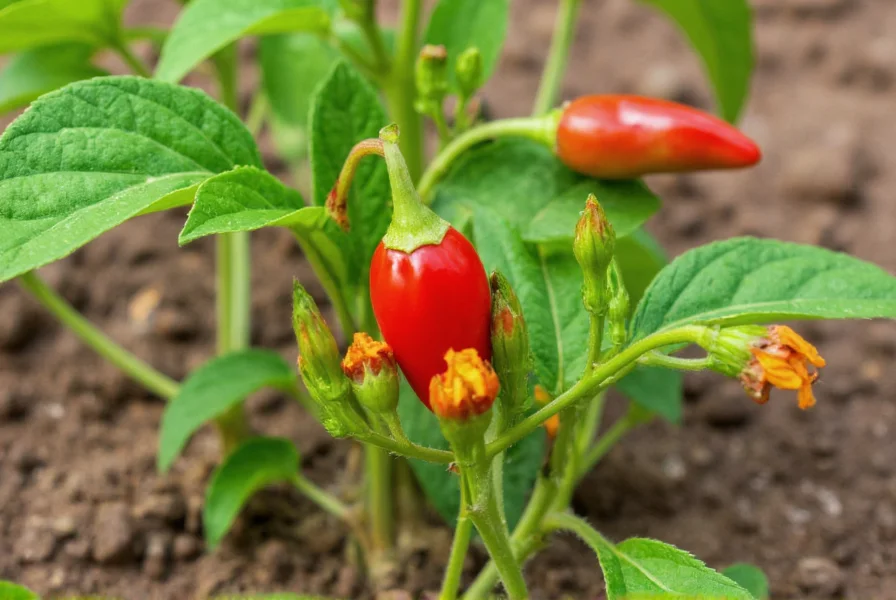When searching for cheyanne pepper information, many home cooks and culinary enthusiasts encounter confusion due to the frequent misspelling of this popular chili variety. The correct term is chile de árbol, sometimes called “bird’s beak” or “bird’s eye” chili, but never “Cheyenne”—a common error stemming from phonetic similarities and confusion with the city name.
Understanding Chile de Árbol: The “Cheyenne Pepper” Misconception
The persistent cheyanne pepper misspelling creates challenges for those seeking authentic information about this essential Mexican ingredient. Chile de árbol (Capsicum annuum) grows on small trees reaching 3-5 feet tall, producing thin, 2-3 inch peppers that transition from bright green to deep red as they mature. Despite frequent confusion, chile de árbol is distinctly different from both cayenne peppers and the unrelated Cheyenne sweet pepper variety.

Heat Level and Flavor Profile
When evaluating cheyanne pepper heat comparison, chile de árbol registers between 15,000-65,000 Scoville Heat Units, placing it significantly hotter than jalapeños (2,500-8,000 SHU) but milder than habaneros (100,000-350,000 SHU). The heat builds gradually with a sharp initial bite followed by a nutty, slightly smoky finish that distinguishes it from other medium-heat chilies.
| Pepper Variety | Scoville Heat Units | Flavor Characteristics |
|---|---|---|
| Chile de árbol | 15,000-65,000 | Sharp, nutty, slightly smoky |
| Cayenne | 30,000-50,000 | Bright, vinegary, consistent heat |
| Serrano | 10,000-23,000 | Grassy, fresh, immediate heat |
| Thai Bird's Eye | 50,000-100,000 | Floral, intense, lingering burn |
Culinary Applications of Chile de Árbol
Professional chefs seeking authentic cheyanne pepper cooking uses will find chile de árbol indispensable in traditional Mexican cuisine. The peppers work exceptionally well:
- As whole dried peppers for salsas rojas and adobo sauces
- Ground into powder for seasoning blends and rubs
- Infused in oils for drizzling over finished dishes
- Rehydrated and blended into complex moles
- Added to pickling liquids for vegetables
Unlike cayenne, which delivers more consistent heat, chile de árbol offers variable heat levels even within the same batch, requiring careful tasting during preparation. For those exploring cheyanne pepper substitute options, guajillo peppers provide similar flavor with less heat, while a combination of cayenne and smoked paprika can approximate both heat and smokiness.
Growing and Sourcing Authentic Chile de Árbol
Home gardeners interested in growing cheyanne peppers successfully should note that chile de árbol requires 80-100 days to maturity, full sun, and well-draining soil. The plants grow bushier than cayenne varieties and produce abundant fruit when properly cared for. For those unable to grow their own, authentic chile de árbol can be found:
- In Latin American markets (look for deep red, brittle dried peppers)
- Online specialty spice retailers
- Mexican grocery stores (often sold in bulk bins)
- Some farmers markets during peak season

Nutritional Benefits and Safety Considerations
When properly handled, chile de árbol offers significant cheyanne pepper health benefits including high vitamin C content (more than oranges by weight), capsaicin for metabolism support, and antioxidants. However, proper handling is crucial—always wear gloves when processing dried peppers to avoid skin irritation, and never touch your face after handling. The fine powder from dried chiles can become airborne, causing respiratory discomfort.
For culinary enthusiasts researching where to buy cheyenne peppers, specialty online retailers often provide fresher product than supermarket alternatives, with better flavor preservation. When stored properly in airtight containers away from light, dried chile de árbol maintains optimal flavor for 6-12 months.
Frequently Asked Questions
Is Cheyenne pepper the same as cayenne pepper?
No, chile de árbol (often misspelled as Cheyenne pepper) and cayenne are distinct varieties. Chile de árbol has a nuttier flavor with variable heat (15,000-65,000 SHU), while cayenne delivers more consistent heat (30,000-50,000 SHU) with a brighter, sharper profile. They are not direct substitutes in recipes requiring authentic Mexican flavor.
What's the best substitute for chile de árbol if unavailable?
For authentic Mexican dishes, guajillo peppers provide the closest flavor match with less heat. For similar heat levels, Thai bird's eye chilies work but lack the nuttiness. A combination of cayenne pepper (for heat) and smoked paprika (for depth) creates the most accessible substitute in non-specialty markets.
How should I store dried chile de árbol peppers?
Store dried chile de árbol in an airtight container away from light and moisture. A dark cupboard maintains optimal flavor for 6-12 months. For extended storage, freeze the peppers in a sealed bag for up to 2 years. Avoid refrigeration, which introduces moisture that degrades quality.
Can I grow chile de árbol peppers in containers?
Yes, chile de árbol grows well in containers of at least 5 gallons with proper drainage. Use quality potting mix, provide 6-8 hours of direct sunlight daily, and maintain consistent moisture without waterlogging. Container-grown plants typically reach 2-3 feet tall and produce abundant fruit throughout the growing season.
Why does my recipe call for toasting chile de árbol before use?
Toasting dried chile de árbol in a dry skillet for 15-30 seconds per side enhances its natural nuttiness and releases aromatic compounds. This critical step in traditional Mexican cooking develops complex flavors that raw or boiled peppers cannot achieve, significantly improving the depth of salsas, moles, and adobos.










 浙公网安备
33010002000092号
浙公网安备
33010002000092号 浙B2-20120091-4
浙B2-20120091-4